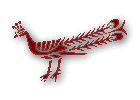 |
| ISSN 1084-7553 |
|
IJTS Vol. 5, No. 1 March 30, 2001 |
| Table of Contents |
| Abstracts |
| Editorial Note |
| The Realm of the Divine... |
| New Titles - 1 |
| New Titles - 2 |
|
IJTS Sections |
| IJTS Home |
| About the Editors |
| Aims of the IJTS |
| Editorial Policy |
| Distribution Policy |
| Copyright Policy |
| Current Issue |
| Back Issues |
| How to Submit |
| Members' Benefits |
| Members' Login |
|
ZaGkara e il KevalAdvaitavAda
2nd. rev. ed., Rome, Azram VidyA, 1998
This is the second revised edition of an excellent work of twenty-four years ago titled ZaGkara e la rinascita del bramanesimo, namely ZaGkara and the Brahmanical revival, dealing with the great advaitavedAnta master who lived between the 8th and 9th century. In this edition the chapter on sources has been placed at the beginning of the book. It includes some 48 pages and has been divided into ZaGkara's Work, External Literary Sources, Archaeological Sources, Biographies [on ZaGkara]. Is this followed by a very useful and completely revised Appendix listing the works attributed to ZaGkara, conveniently divided into works collegially attributed to him and works of which attribution is debated. The second chapter deals with ZaGkara's life and legend and covers 112 pages; it includes paragraphs 23 and 24 on ZaGkara's sojourn in Kashmir and his encounter with the zAkta teacher Abhinavagupta who lived in Assam -- who he is not the famous Kashmiri teacher Abhinavagupta, who lived in the 11th century --while paragraph 26 deals with his trip to Nepal and his supporting the building of the PazupathinAth temple in Kathmandu. The following hundred pages are devoted to the study of ZaGkara's doctrine. It follows 52 pages of Bibliography which is, even though including works in Sanskrit and Indian modern languages as well as non-Indian works, forcibly incomplete since works on ZaGkara and bibliographies are published almost weekly either in the Internet or in hard copy. One small note: Did I overlook it or the works in the bibliography are neither arranged alphabetically (according to authors' names or titles written in any language), nor according their date of publication? It is regrettable that this book is in Italian. It is a precise and comprehensive work, which is not only written in scholarly form and contents -- even diacritics are usually correct! -- and as such indispensable to serious Indologists, but it is also pleasant to read. It can be properly placed between the classical work on ZaGkara by Govindachandra Pande (1994) and the six-volume source-book by Anthony John Alston (1980-1989). EG
La liberazione in vita: jIvanmuktiviveka
Milan, Adelphi, 1995
It is a pleasure to present our new IJTS editor through this book, which offers the 1st Italian translation of the jIvanmuktiviveka, namely Liberation of Life of the advaitavedAnta (non-dualistic VedAnta) teacher VidyAraNya. The jIvanmuktiviveka is the famous work of the ZaGkara's follower VidyAraNya who lived at the beginning of the 14th and was perhaps the master of the sRGgeri monastic centre established by ZaGkara. He is also well known and very important in the political history of India by being guru and advisor, under the name of Madhava, of the brothers Harihara and Bukka, in Karnataka. Following his advice, they established the Vijayanagara Empire, one of the last medieval kingdoms, which lasted for more than three hundred years and was able to stop the Muslim expansion in Deccan. The present translation follows a long eighty-three page introduction on VidyAraNya's life and elaboration of his doctrine, which describes the spiritual path that leads to the abandonment of the worldly life by love of knowledge, the identification with Brahman and furthermore brings men, by the means of yoga, to dominate the sensorial and empiric world and to become -- extreme contradiction -- liberated from life while living, namely people who breath and live like any human being and, at the same time, have perfectly overcome their body and their Ego. Unfortunately this book is in Italian, though scholars all over the world will find it useful for its critical apparatus. The introduction which is extremely rich of erudite footnotes, covering sometimes almost half of a page, the precise world-by-world yet enjoyable translation -- written in elegant Italian which does not resort to redundant sophistications and idiomatic expressions of the beginning of the century, still in use in certain contemporary scholarship, which would make even more difficult this already difficult text -- the Appendix of the passages cited by VidyAraNya and the useful analytic index, all this makes of this book a "must" in Indological studies. EG |
||